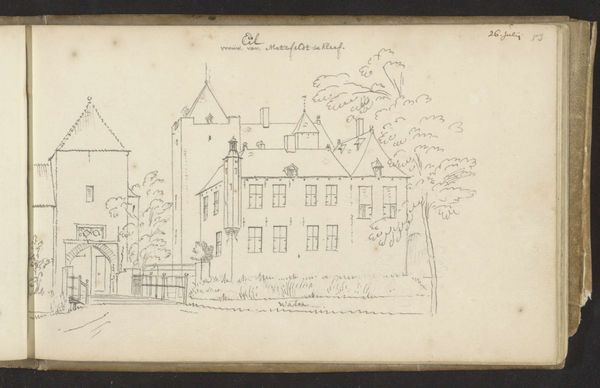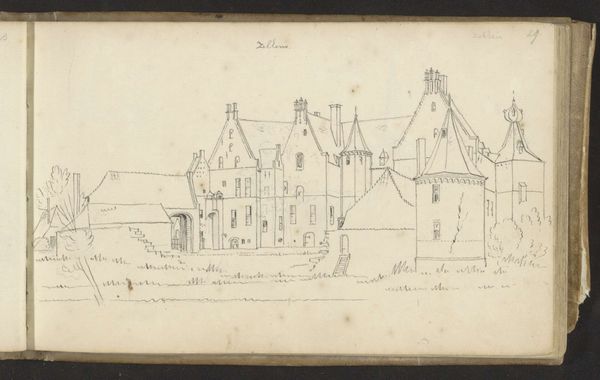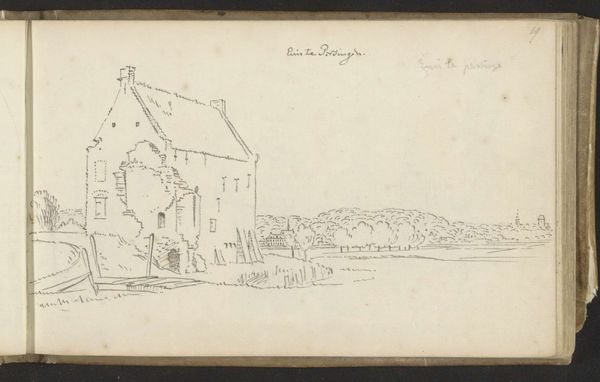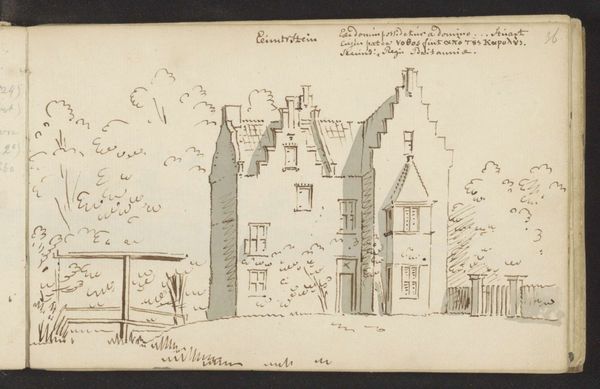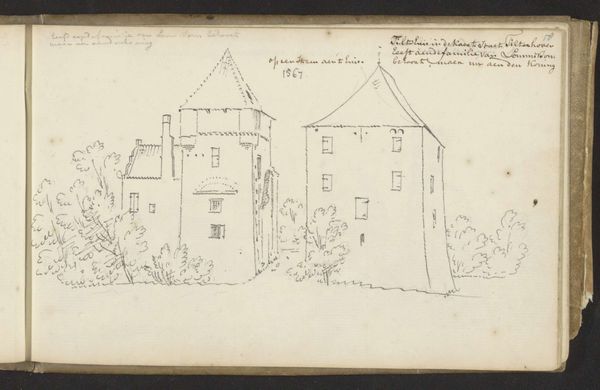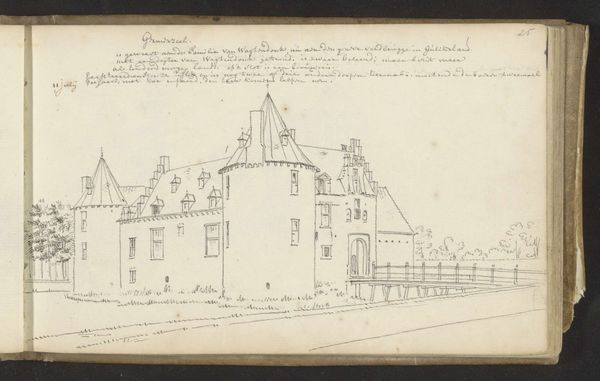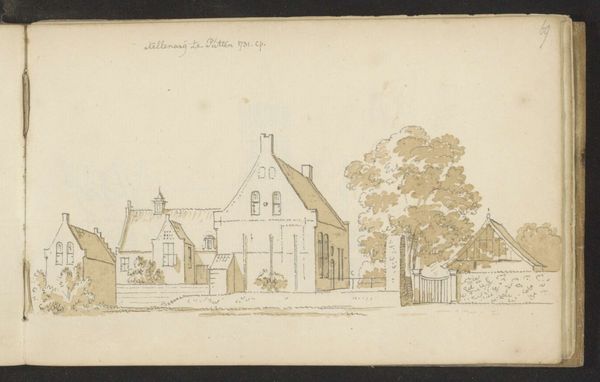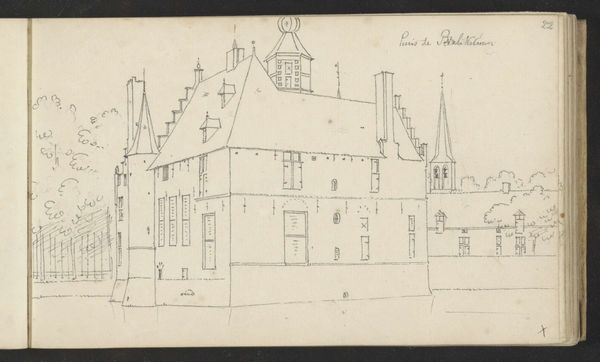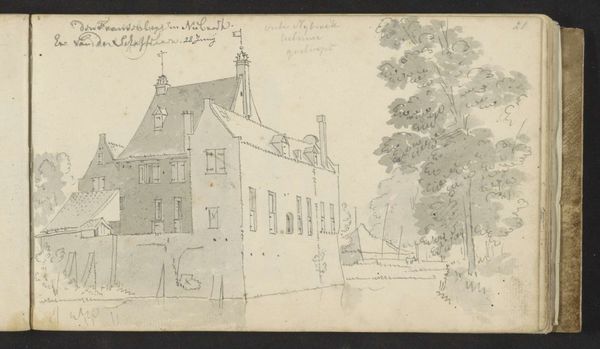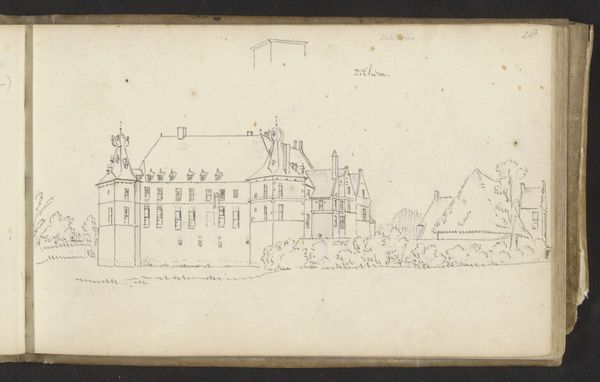
#
quirky sketch
#
sketch book
#
personal sketchbook
#
idea generation sketch
#
sketchwork
#
pen-ink sketch
#
pen work
#
sketchbook drawing
#
storyboard and sketchbook work
#
sketchbook art
Copyright: Rijks Museum: Open Domain
Abraham de Haen the second made this pen drawing of Huis Bergh castle and the church at 's-Heerenberg sometime in the first half of the 18th century. The scene presents a modest, even humble, vision of Dutch life and its institutions. The image creates meaning through its linear style and documentary function, common in Dutch Golden Age art. Made in the Netherlands, we might consider how Dutch geography, with its castles and church buildings, and the Protestant Reformation influenced this work. The lack of overt symbolism suggests a move away from Catholic iconography, towards a more practical sensibility, a sensibility that valued detailed observation. Art historians rely on archival material to understand not only the artist's intentions, but also the reception of such works, and what they tell us about the intersection of art, society, and institutional power. Art's meaning shifts with social and institutional context, making its interpretation a dynamic, ongoing process.
Comments
No comments
Be the first to comment and join the conversation on the ultimate creative platform.
